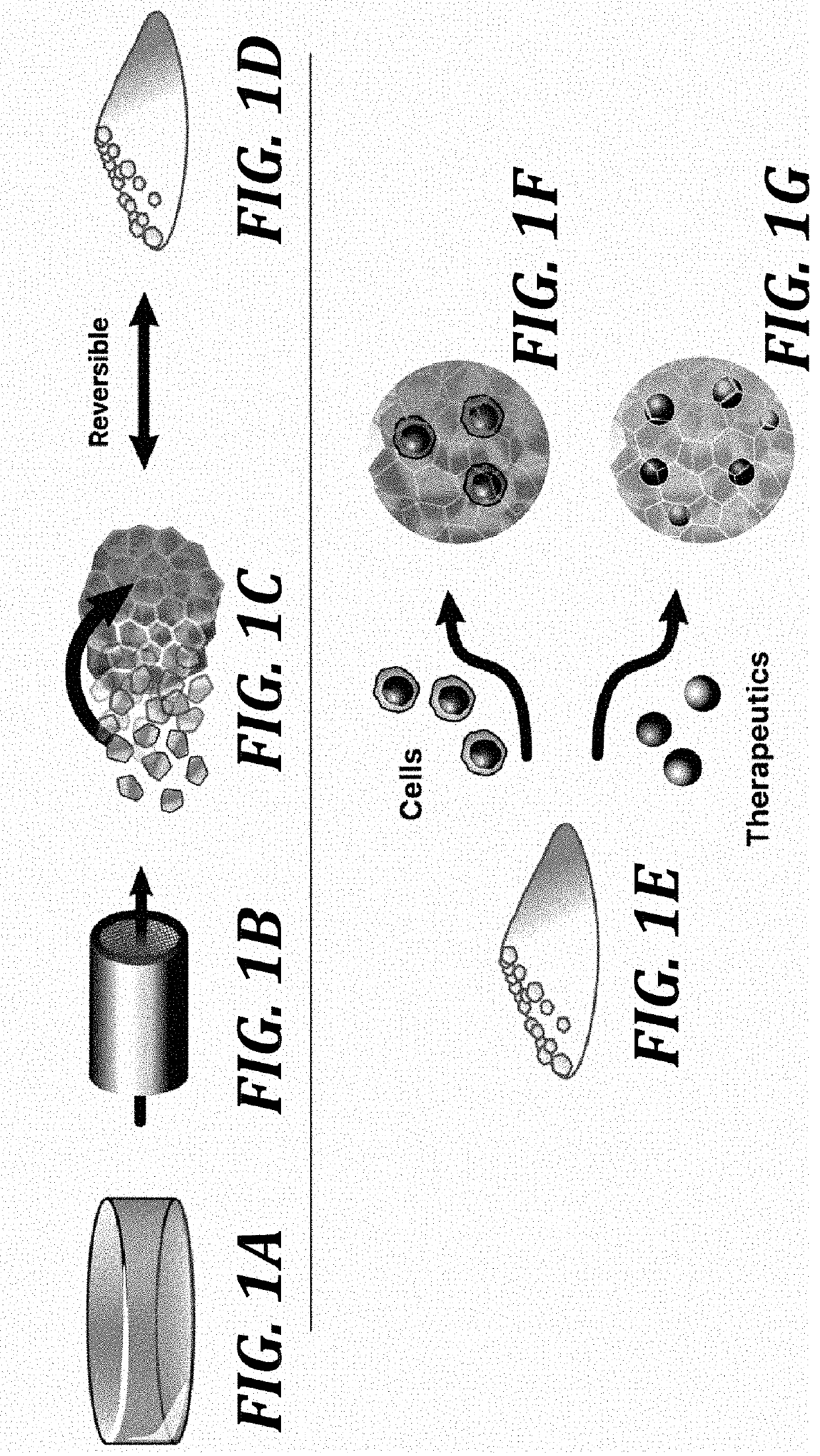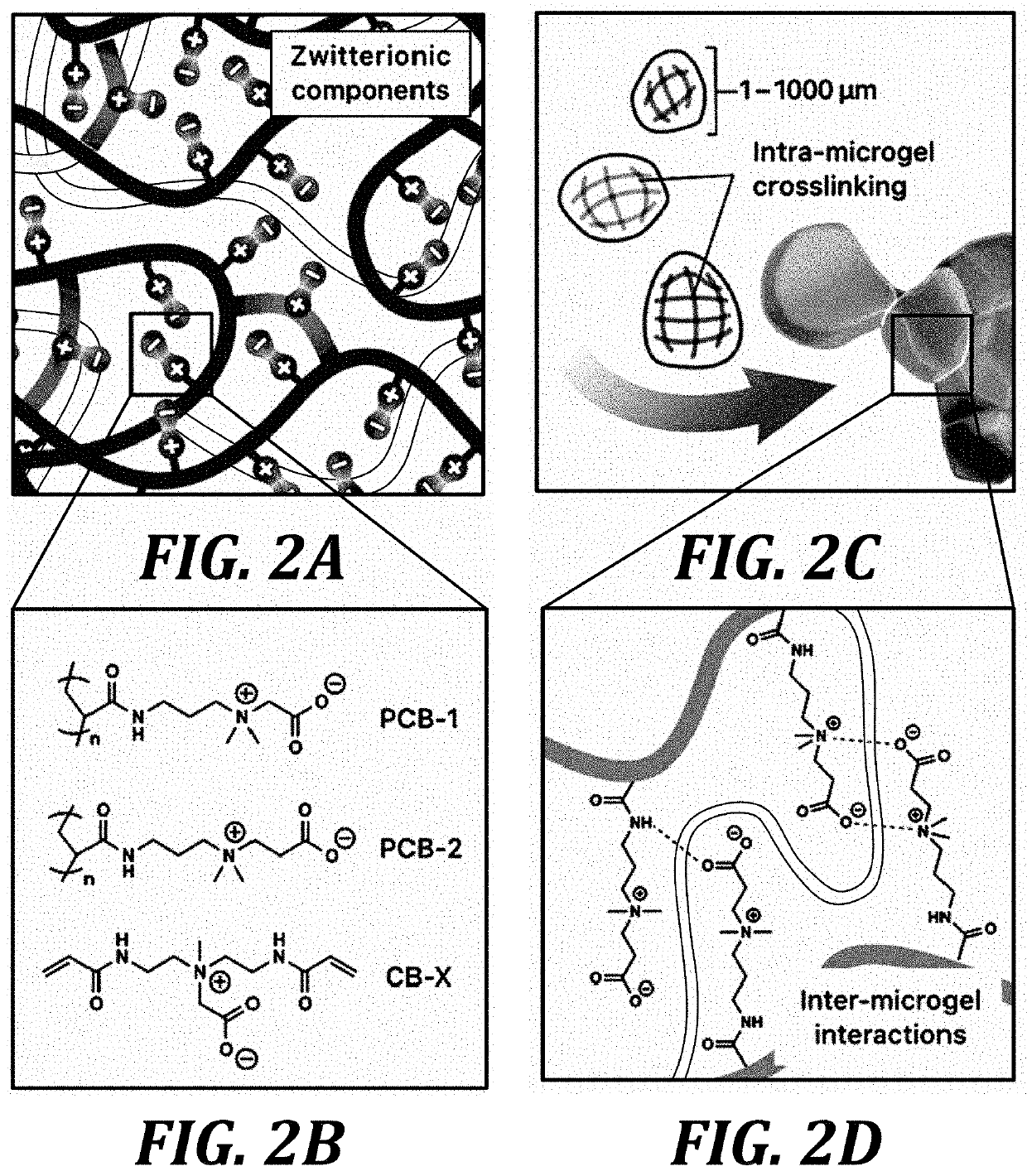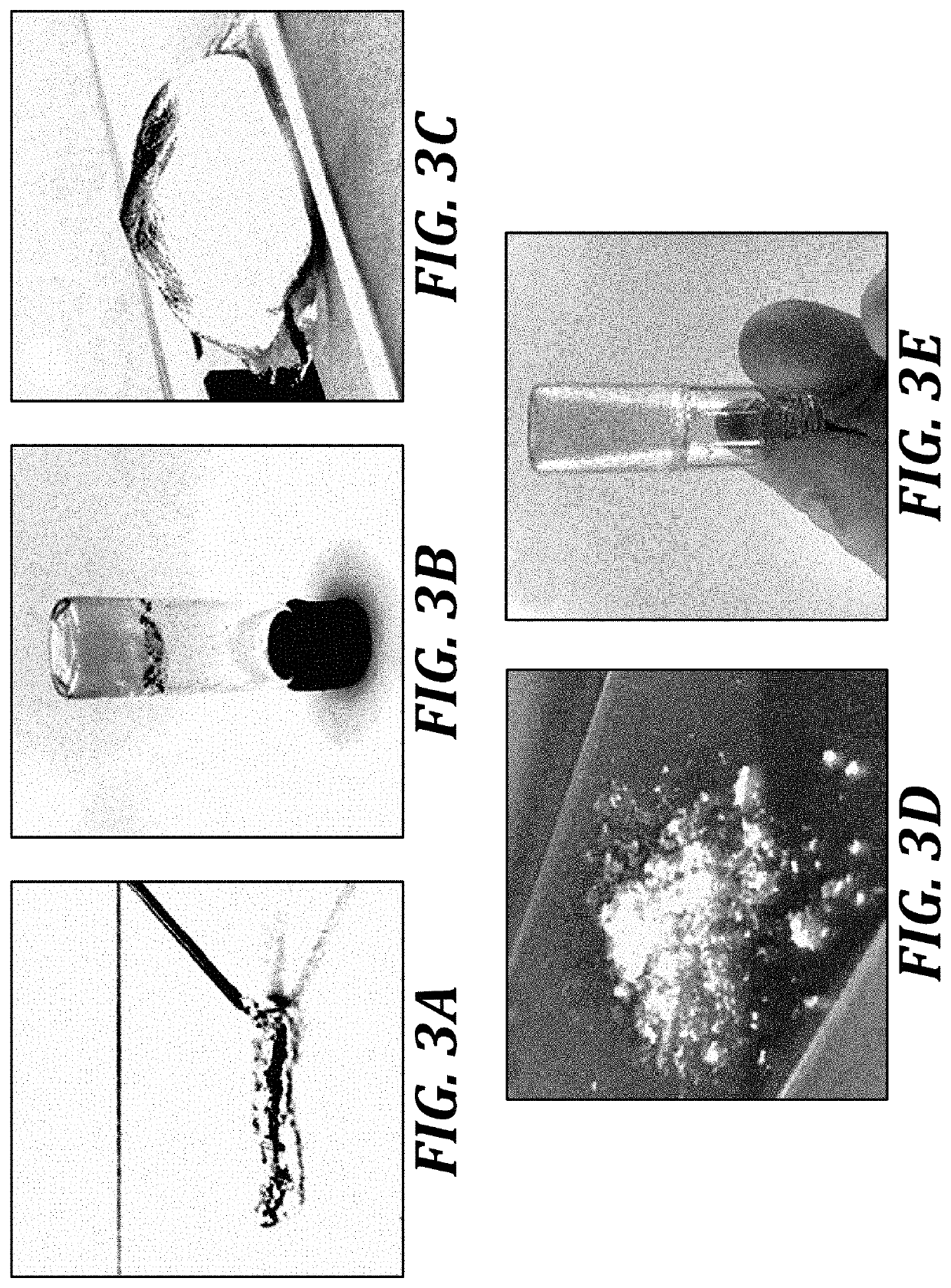Zwitterionic microgels, their assemblies and related formulations, and methods for their use
- Summary
- Abstract
- Description
- Claims
- Application Information
AI Technical Summary
Benefits of technology
Problems solved by technology
Method used
Image
Examples
example 1
Preparation, Characterization, and Use of Representative Zwitterionic Microgels
[0180]In this example, methods for preparing, characterizing, and using representative zwitterionic microgels of the invention are described.
[0181]Microgel production. To prepare zwitterionic microgel constructs, bulk zwitterionic hydrogels were prepared using a photopolymerization method. Carboxybetaine acrylamide (CBAA) monomer (2.5 M), CB AA-X crosslinker (0.01-1% mol / mol), and photoinitiator 2-hydroxy-1-[4-(2-hydroxyethoxy)phenyl]-2-methyl-1-propanone (I2959) were dissolved in water, mixed well, and degassed under vacuum. The concentrated solution was then cast into a 1-mm thick glass mold and polymerized in a Spectroline XL-1500 UV oven. The resulting hydrogels were equilibrated in water for several days to remove any unreacted reagents and allow swelling. A library of these parent hydrogels was generated using either CBAA-1 or CBAA-2 monomer and several CBAA-X crosslinker concentrations between 0.02...
example 2
Platelet Preservation with Representative Zwitterionic Microgels
[0186]In this example, platelet preservation using representative zwitterionic microgels of the invention is described.
[0187]Platelets are blood cells that play a key role in clotting and have many other functions. Platelet transfusion is necessary in trauma and blood disorders. Unfortunately, platelets activate and rapidly become therapeutically useless when removed from the bloodstream of a donor and put into storage. The current state-of-the-art protocol calls for room temperature storage under constant gentle agitation, to prevent aggregation and allow even oxygen diffusion. Low temperature refrigerated storage (4° C.) paradoxically causes platelets to lose their clotting ability even faster, but the maximum room-temperature storage time is only between 5-7 days. While platelet additive solutions and gas-permeable bags have increased this maximum storage time, nonspecific aggregation, bacterial contamination, and pl...
example 3
[0193]In this example, biomanufacturing or industrial-scale cell culture or expansion using representative zwitterionic microgels of the invention is described.
[0194]Currently, there has been limited success in expanding stem cell populations and other cells relevant to immunotherapy such as T cells in conventional bioreactors while maintaining their multipotency and / or therapeutic activity. Most materials present in reactors, including optimized biomaterials and modified surfaces, provide nonspecific interactions with cells that trigger phenotype change, contribute to cellular senescence, or require damaging encapsulation reactions and recovery procedures. Shear damage in stirred-tank reactors also limits growth. Pure zwitterionic hydrogels can maintain stem cell multipotency for an unprecedented length of time, and support their expansion at a small scale while protecting them from shear damage. To support cell expansion for a long period of time in continuous culture, z...
PUM
| Property | Measurement | Unit |
|---|---|---|
| Fraction | aaaaa | aaaaa |
| Fraction | aaaaa | aaaaa |
| Fraction | aaaaa | aaaaa |
Abstract
Description
Claims
Application Information
 Login to View More
Login to View More - R&D
- Intellectual Property
- Life Sciences
- Materials
- Tech Scout
- Unparalleled Data Quality
- Higher Quality Content
- 60% Fewer Hallucinations
Browse by: Latest US Patents, China's latest patents, Technical Efficacy Thesaurus, Application Domain, Technology Topic, Popular Technical Reports.
© 2025 PatSnap. All rights reserved.Legal|Privacy policy|Modern Slavery Act Transparency Statement|Sitemap|About US| Contact US: help@patsnap.com



